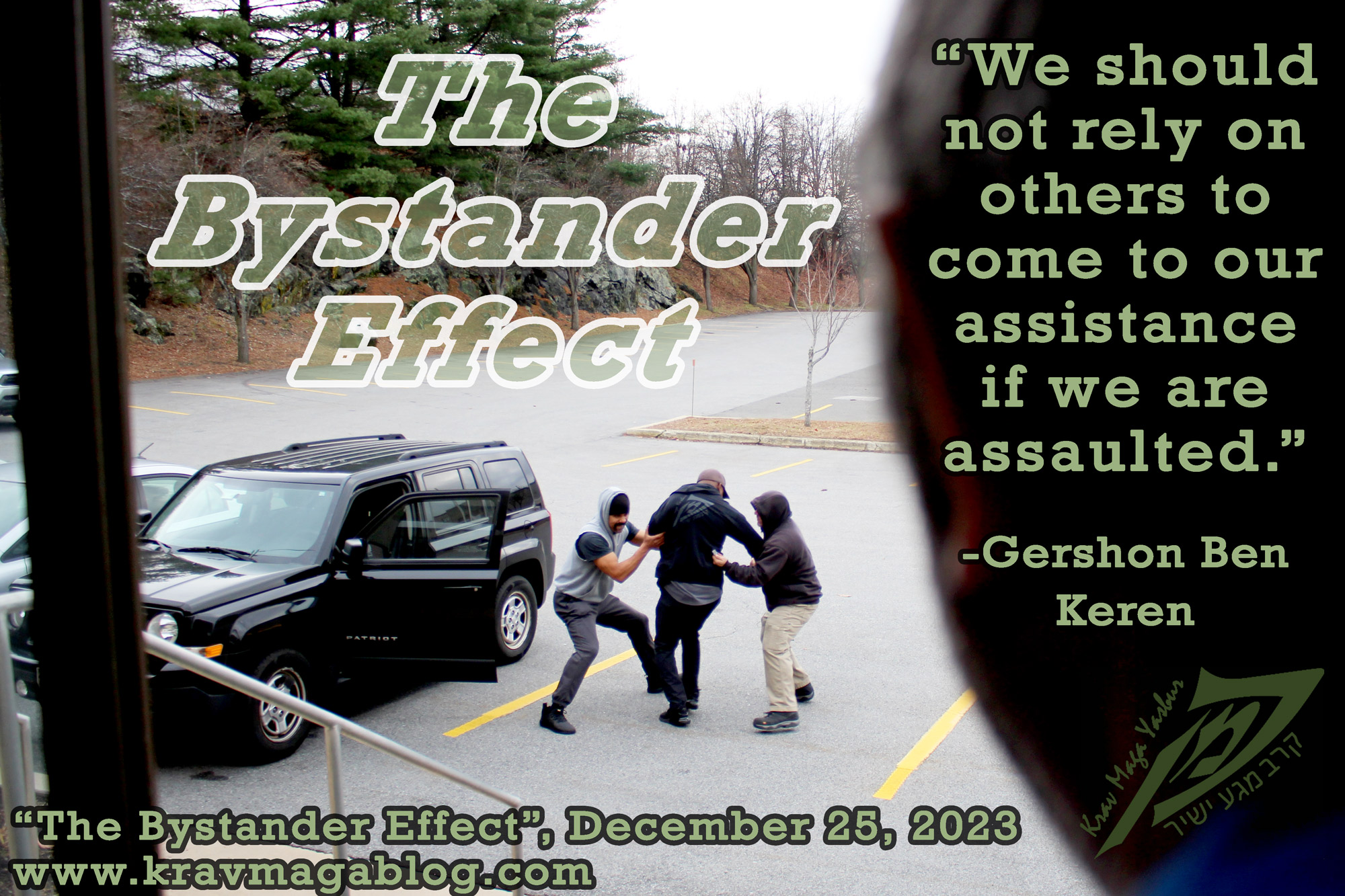On March 24th, 1964, a story appeared in the New York Times, stating that 38 people watched - for more than half an hour without intervening – the stabbing of Catherine “Kitty” Genovese. The story came some two weeks after the rape/murder, and was inaccurate in many regards, including the number of people who witnessed the incident. However, it was true that several people had watched the event from their apartment windows and hadn’t called the police – each recognizing that others were watching the stabbing, but unaware as to their reaction(s) and response(s) to it. At the time many put the lack of intervention down to a moral and societal decay, portraying those who had witnessed the homicide cold and uncaring. However, there were others who recognized that something else may be responsible for “Genovese Syndrome”, and looked to explain why crowds and groups of people may not intervene, or even do anything, in a crisis event where someone’s life was at stake.
Two of these individuals were psychologists Bibb Latane and John Darley. In 1968 they conducted an experiment where an individual was placed in a room that started to fill up with smoke. They were either on their own, with another person, or in a group of three. The other/extra people taking part in experiment were confederates who had been instructed how they should act and respond. They found that 75% of their research subjects would report the smoke if on their own, whilst only 10% did when in the room with confederates who showed no reaction to the room filling with smoke. They also ran other experiments where individuals heard a person in another room have what sounded like an extreme epileptic type of fit. In one experimental condition the individual thought they were the only one aware of what was going on, whilst in another they thought there were four others who were also aware that someone was having a seizure. Those on their own were both more likely to act and do so faster than when they were part of a group. Latane and Darley concluded that the most likely reason for people responding less when they were part of a group was down to a “Diffusion of Responsibility” i.e., if an individual was on their own then they believed they were the one who was responsible for reporting an incident, however if there were others present then this responsibility was shared/diffused between the group members. Latane and Darley did note that when there were times a group could interact and talk with each other then sometimes collective action was taken. Linked to the idea of there being a diffusion of responsibility, Latane and Darley also identified a corresponding diffusion of blame i.e., if someone was the only person present when something bad happened (such as an assault resulting in a homicide) and the individual did nothing to intervene than they may feel that they have 100% of the blame to bear, however if they were one of 20 who witnessed the incident they may only feel 5% of the blame is theirs to bear etc., and they may feel that they are able to cope with that – they may also feel that none of the blame is theirs because there were other more capable individuals present who could have intervened.
Bibb and Latane weren’t the first to look at how individuals act when they are part of a group. In the 1950’s, Solomon Ash researched the idea of there being a “herd mentality” i.e., people would go with the group consensus even when they knew it was wrong/incorrect. He placed a research subject in amongst a group of confederates and asked them questions which had fairly obvious answers, including basic math questions/calculations etc. The confederates who made up most of the group would sometimes collectively agree on a wrong answer, and it would be seen whether the subject would disagree with them and make the case for the right answer. In around 75% of cases, they would stick with the group and give the incorrect answer. Most individuals will do almost anything to avoid a socially awkward situation. Better to go along with the group than stand out as an individual. This was one of the reasons why only 8.6% of those in the Twin Towers on 9/11, evacuated their desks the moment they heard the alarms. Most (91.4%) waited an average of 8 minutes to start leaving, with a significant number taking up to half an hour. These were individuals who had experienced the impact of the planes hitting their buildings. It wasn’t just the alarms going off that gave them a warning that something extremely dangerous was happening. However, when the majority of co-workers are staying at their desks, there is social pressure to do the same, and not look like you’re scared and panicking e.g., what if later it did turn out to be nothing? Would that person become the laughingstock of the office?
These studies and examples demonstrate that we should not rely on others to come to our assistance if we are assaulted. However, it also shows us that if we do want to intervene in a conflict, we will have to direct others in assisting us, possibly implying responsibility and guilt to help motivate them. Far better to intervene as part of a group than as an individual. We should also have confidence in our own abilities to assess a situation and not rely on others to do it on our behalf.
Share:

Gershon Ben Keren
2.8K FollowersGershon Ben Keren, is a criminologist, security consultant and Krav Maga Instructor (5th Degree Black Belt) who completed his instructor training in Israel. He has written three books on Krav Maga and was a 2010 inductee into the Museum of Israeli Martial Arts.
Click here to learn more.

